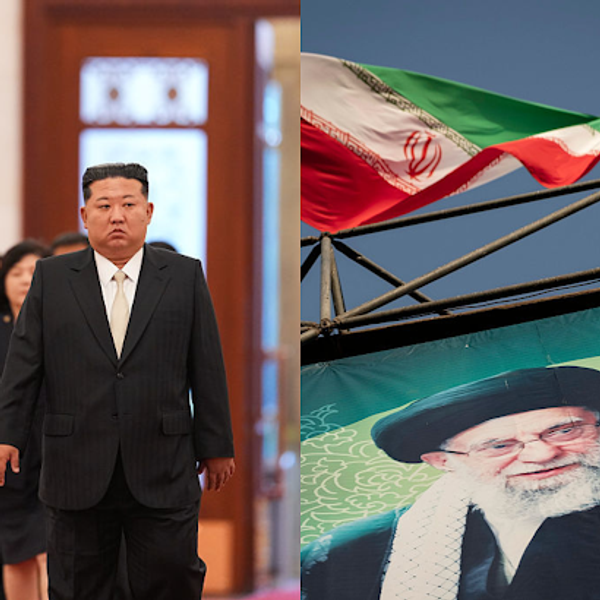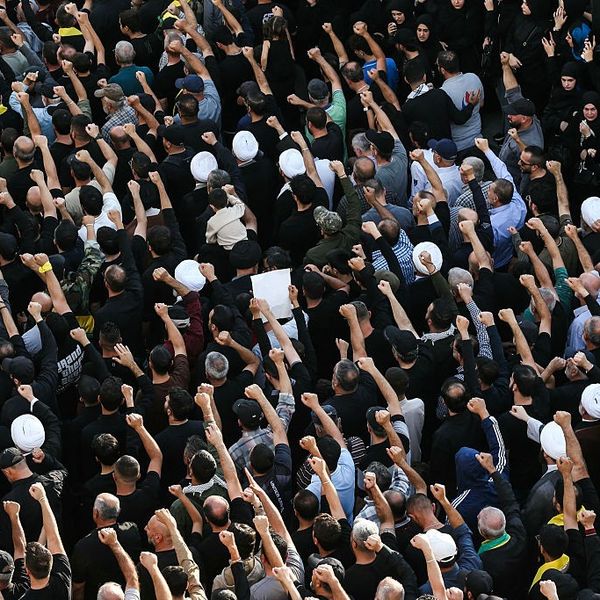Bottom Line Up Front:
- On October 01, Iran fired several ballistic missiles at Islamic State targets in Syria.
- Tehran claimed that the missiles were launched in response to the September 22 terrorist attack on a military parade in Ahvaz, Iran, that killed at least 24 people.
- The U.S. remains concerned that Iranian-sponsored militias or proxies could target U.S. forces in Syria, since Iran partly blames the U.S. for the parade attack.
- Meanwhile, the U.S. is planning to keep troops in Syria until Iranian forces and their proxies depart in earnest, presaging a lengthy and complicated presence.
There has long been concern among U.S. defense officials that Iran could use its proxies and militias in Syria (such as Hezbollah) to target U.S. or U.S.-led coalition forces operating in the country. That concern surfaced again last week, after Tehran blamed the U.S., as well as domestic separatist groups and the so-called Islamic State, for the September 22 attack on a military parade in Ahvaz, Iran, in which at least 24 people were killed. Some analysts see the attack as inevitable blowback for Iranian involvement in the Syrian civil war.
Indeed, Iran has consistently delivered weapons to the Assad regime, while also supplying the Syrian dictator with troops and trainers as he seeks to regain control over the country by establishing a monopoly on the use of force, often with brutal results.
That threat of an American-Iranian conflagration remains poignant after Iran launched six ballistic missiles from Kermanshah province in western Iran at Islamic State positions near Hanjin, Syria, one of the last relative strongholds for the diminished group. A statement by the Islamic Revolutionary Guard Corps (IRGC) said those targeted were ‘takfiri terrorists’ and that several of them were killed in the attack. The statement also said that Iranian drones were then used after the missile strikes. The killing of a small number of Islamic State foot soldiers via ballistic missiles is a clear indication that the strike was intended for an audience other than the Islamic State. With the strike, Iran sought to remind the U.S. and others (including Israel) that it has the wherewithal to author a credible ballistic missile capability outside its borders. As further evidence, just last week, the IRGC launched ballistic missiles at Kurdish militants in Iraq.
It is unlikely that Iran would directly attack U.S. forces or U.S.-led forces. It has more than enough proxy capability in Syria to avoid such a direct confrontation. It is also unlikely that it would ‘use’ Hezbollah for any such attack, given the consequences. Far more likely, however, is an unattributed attack or actions undertaken in the so-called ‘gray zone’ against U.S. interests in Syria. These attacks could involve Iranian-supplied missiles or not, depending on how strong or obvious Iran wants the connection to be. The U.S. has publicly warned the mullahs that any attack by Iran or its proxies would have severe repercussions. At the United Nations last week, National Security Advisor John Bolton warned Iran that "if you cross us, our allies, or our partners; if you harm our citizens; if you continue to lie, cheat, and deceive, yes, there will indeed be hell to pay." The sabre rattling at the UN should not be dismissed as mere posturing. The conflict grows more complicated as the fight between the Assad regime and the rebels grows more one-sided in Assad’s favor.
The U.S. had initially justified its military operations, and then a military presence in Syria, on the broadly interpreted 2001 Authorization for the Use of Military Force against Terrorists (AUMF). It has essentially abandoned that veneer of authorization and is now openly declaring that it will stay in Syria until Iranian forces and their proxies depart. But this seems highly unlikely, as Iran has maintained a military presence in Syria for decades and is its main conduit for supporting and arming Hezbollah and other groups. Tehran isn’t going to leave Syria because of U.S. pressure, and likely will increase its presence precisely because of the U.S. presence. This could lead to a long-term stalemate in which the two sides justify their presence by the presence of the other.
Compounding the difficulty, is that the U.S. deployed troops to Syria, despite the opposition of the Assad regime. Washington is hopeful that a future negotiated political settlement to the Syrian civil war includes a mechanism for a continued American presence throughout small pockets of the country. However, as of late 2018, American leverage has arguably reached a nadir. Moreover, the longer the U.S. military keeps forces in Syria, the higher the likelihood of direct skirmishes with Iranian forces or their allies, that have the potential to escalate the conflict beyond Syria’s borders.








